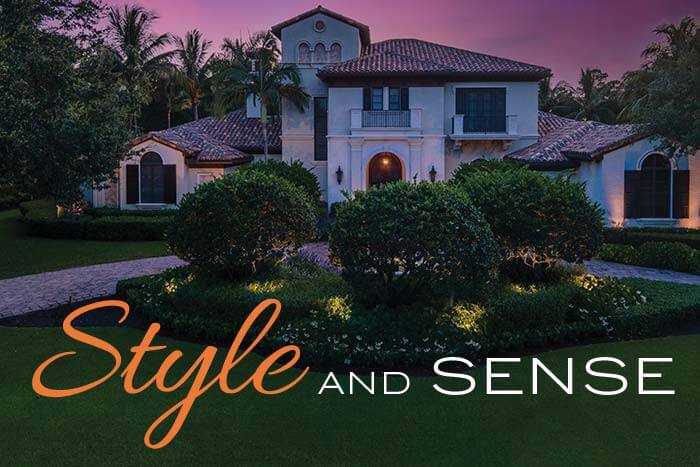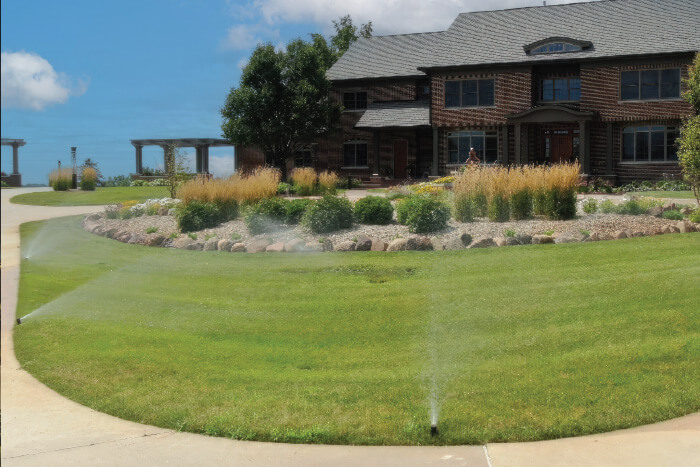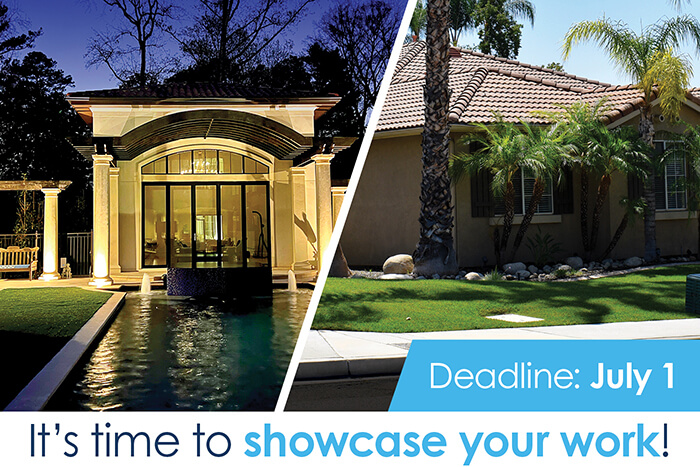Theft in a wealthy Palm Beach County, Florida, neighborhood prompted homeowners to consider security lighting. The rash of break-ins prompted a flood of inquiries to a local security camera company with callers frequently asking about installing lighting to deter robbers.
Realizing lighting was outside their wheelhouse, the security company asked a client for a recommendation, and they were put in touch with David Lockey, president of Landscape Lighting Specialists Inc., West Palm Beach, Florida. The endorsement was a reward for a job well done on the referring individual’s home.
“Referral is always the best. It gives the client more trust in your work hearing from somebody you’re already working with,” Lockey says. “The project started because the homeowner wanted lighting for security, but this project was not specific to security lighting. That’s just how it all started.”
The homeowners had a basic builder spec lighting system installed when the house was first built. They “lived with it” for years before deciding it was time for a change. First, Lockey met with the couple to walk the property. His goal was to see firsthand the features on the property and learn their needs and wish list.

During an initial visit, Lockey asks clients several questions to better understand their goals and to learn what they want to highlight in the gardens and around the property. For this project, a fountain and a series of alcoves over the garage doors rose to the top of the list.
“Their dining room has a large glass window, and they could see the fountain from it except that it was dark at night,” he says. “It was one of the things that was important to them.”
Lockey takes pictures of aspects of the job, especially any areas the client identifies, and those he suggests in a lighting design. He marks up the photos with numbers and symbols to represent locations for lights, and he includes a legend to denote different types of lights.
In his opinion, this approach is more efficient than using computer software. A cell phone camera is easy to work with, and then he is not limited to how a program is coded. That leaves him the flexibility to design and name items on the image as he sees fit.
“Using the cell phone photos to create the design gives the best representation of the project, so the client knows exactly what we’re doing,” he says.
Security concerns promoted this lighting project, but it was immediately clear the homeowners wanted to enhance the aesthetics of their property during the initial meeting. With a clear picture of the project objective, he got to work designing.
A blank canvas
Typically, Lockey asks clients up front about their budget. Many have a sum in mind, but these clients didn’t commit to a figure. Rather than assume they wouldn’t pay for an extensive lighting design, he eagerly filled the blank canvas with a focus on creating cohesion across the entire property.
“I went into the design not thinking about a budget. I didn’t want that to take me down the road of thinking, ‘Should I light this or not because of budget restrictions?’ So, I put in everything,” he says.

The result was a spectacular design that added curb appeal and an increased sense of security. The design included nearly 200 fixtures, a combination of floodlights, in-ground well lights and up lights. Each one matched to a specific purpose.
For example, he chose floodlights for the larger trees to illuminate the width of a large canopy rather than focusing on how high the light reached. For grassy areas, he opted for in-ground well lights so that the lawncare company could mow right over the top. Sinking the fixtures into the ground made them flush with the surface while still achieving the design objective.
“The fixture choice all depends on the objective. In this case, it was semi-security, but then the client also says, ‘Let’s make the house look like it should,’” he says. “In this case, we didn’t use higher wattage bulbs, which are typically used on security-focused jobs. We didn’t want to overdo what we were trying to accomplish. It turned out to be nicely lit for security, but it is not blasting on when a sensor picks up movement.”
Selling the design
With a vision in mind, Lockey was ready to sell the proposal. First, he walked the property with the couple a second time and pointed out each part of the design using both the marked-up photos and the real-life features.
Then he brought them to his mobile showroom in the back of his van. Inside, the open space has been transformed into a pseudo-backyard with a variety of fixtures. Some are mounted to the back doors while others are affixed to shelves finished with a layer of synthetic turf.

“To me, details are very important. The boxes that everything is sitting on are painted and have artificial grass so people can see how it really looks,” he says. The return on investment of “a mobile showroom is great because I’m able to give my clients more than one option instead of showing up with a fixture in the back of a car.”
Beneath the display he fills drawers with a variety of manufacturers’ fixtures so customers can touch and feel the difference in quality and style of brands. The showroom is fully functional, and wired so that he can demonstrate the effect of a given fixture or bulb on various aspects of the design.
“Most people don’t know about landscape lighting. They are used to going to a big box store and seeing a set of 12 lights for $125,” he says. “In landscape lighting, that’s not the case. One light can cost $125.”
Educating customers about the product and process is a big part of Lockey’s sales process. He uses the approach on every job but especially on big projects that may total $50,000 to $60,000. He wants clients to know who the company is, what they’re offering and why they are doing what they are.

For example, if a client has a palm tree, he explains why he recommends two units rather than one light. This is because a triple palm tree lit with only one light will have a hot spot on one trunk, whereas two lights will illuminate all three trunks and the canopy.
“I try to explain everything we are doing and why we do it so that customers understand what they are getting,” he says. “Giving them the chance to feel the difference between different types of lights helps people see exactly what they are buying.”
During the conversation in the mobile showroom, he includes details about the installation process. For example, he tells clients about using copper crimps and grease tubes rather than wire nuts and electrical tape. He explains this is to avoid connection failures. He also highlights manufacturer warranties and shows the results of using different bulbs.
By the time this South Florida couple finished asking questions at the mobile showroom, the deal was done. Lockey sensed the couple “wanted something extra,” so he threw in four indicator lights at the end of the driveway. In hindsight, he says it wasn’t likely necessary to close the deal but made the homeowners feel like they “got something.”
Smooth sailing
Once the contract was signed, the installation was straightforward and problem-free. Preparation played a big part in avoiding issues from cropping up on the job, he says. Walking the property allowed Lockey to see the existing low voltage system, and based on his 17 years of experience, he knew there would not be power issues for the LED lights he selected.

“I had done all the calculations beforehand, so I knew my design was OK,” he says. “Today, everything is so much easier. In the old days, we had to worry about halogen bulbs and voltage drop. Now, everything is LED and we don’t have to worry about those things. I do still worry and oversize the wire just to be sure.”
Lockey credits his crew with figuring out how to get power to the lights in the design that allow all jobs to proceed smoothly. He doesn’t micromanage on-site and stays out of the way on installations.
“I’m blessed that my crew who does the installation has been with me eight years and they know how I want things. I go out and design, but the real truth is that they make it happen.”
Based in the Royal Palm Beach area, Lockey has access to many customers who are willing to pay top-dollar for quality lighting systems over those in the big box store. Clients and distributor referrals have taken the company across Florida, and one client wants him to travel north to a property in Pennsylvania. But he doesn’t take for granted that they have money to spend.
I’ve always believed that when you do the right things, it comes back to you two-fold. I don’t skimp on things and make sure we do it the right way. — David Lockey, Landscape Lighting Specialists
“I’ve always believed that when you do the right things, it comes back to you two-fold. I don’t skimp on things and make sure we do it the right way,” he says. “I love what I do and welcome clients to my lighting family, but unless they buy more lights, want to add maintenance or refer me, I don’t want to hear from them again. All the things I do like oversizing the wire, using quality materials, etc., are all done to avoid getting a phone call back.”





